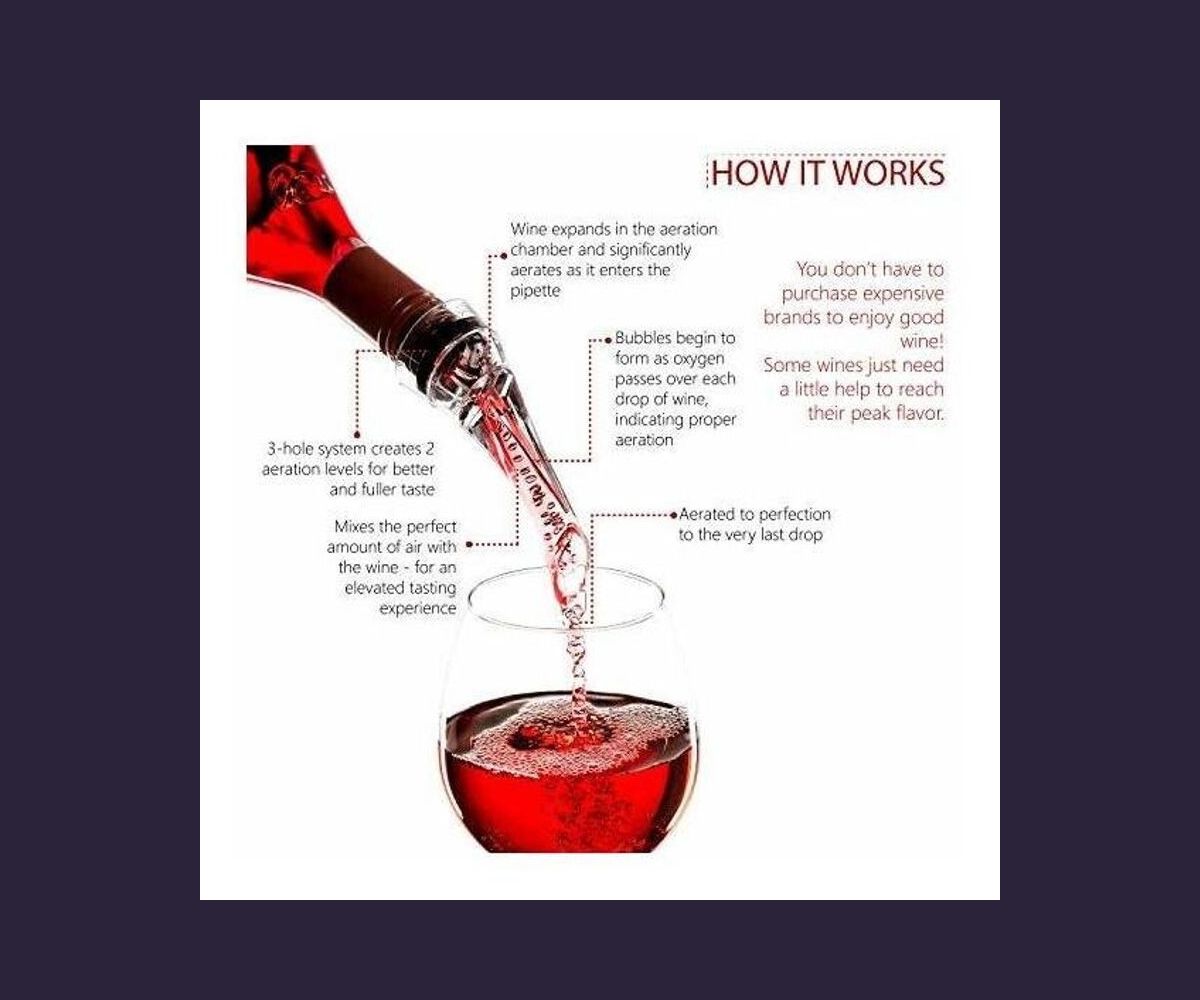Aeration of Wines

Those of us who have a tendency to “lose” wines in the cellar would be well familiar with the happy situation of “finding” a well-aged bottle of red amongst more recent vintages and dusting off the label to reveal a birth date much further back in history than we expected.
Though opening these elder statesmen of the cellar can be a game of Russian Roulette; the wine might be mature, smooth and delightfully well balanced, but it might also be akin to vinegar and worth only of making a red wine jus.
But one thing is for sure; once you pull the cork or crack the Stelvin, you won’t really know what you’ve got until you’ve given it time to open up and show its best.
So what and why is aeration? Simply put, exposing the wine to air and allowing it to “breathe” causes both evaporation and oxidation to occur. These processes can change the chemistry of the wine and make it really good; or sometimes, really bad!
Typically, most serious wine-lovers use time in a decanter to allow the wine to open up.
But it’s not just about allowing the flavours to emerge from the wine but also about enabling the odorous gases to escape. Volatile compounds can evaporate in the air and allowing the wine to spend time exposed to the air will enable these unfriendly scents to dissipate while permitting the more pleasant characters to regain prominence.
And one particularly unpleasant smell commonly encountered upon the opening of an old bottle is sulphites. These compounds are beneficial to preserving wines but can resemble the aroma of smashed rotten eggs and even rubbing alcohol. They can ruin the experience of an aged bottle but some well-timed exposure through aeration can vastly improve the nose after allowing dissipation of these once shackled nasties.
One of the other consequences of exposing old wines to air is oxidization; the chemical process which makes iron gates go rusty or causes cut apples to go brown. The process will often cause loss of fruit flavours from red wines or in white wines like chardonnay or Semillon, cause it to show a nuttiness or a loss of colour.
Once oxidized, some wines can become dull or flat and lose their liveliness and are far less enjoyable.
While there can be a downside to aeration, the reality is that it is almost impossible to avoid some air exposure once a bottle is opened. And after all, the majority of wines improve with the process. So if you ask me, decanting older wines is a must, but these days, there’s no need to carry a large piece of glassware with you to achieve optimum aeration.
I recently stumbled across a new product that conveniently and effectively aerates wines without the need for an expensive piece of crystal ware. The Aer.De.Vino is a tool that is said to use high-pressure oxygenation, magnetic force, and red light to aerate the wine and to enhance tannin.
It’s rechargeable, electric and sits comfortably on top of an open bottle to enable instant air exposure and is small enough to be carried anywhere. At around $75 online, it’s much cheaper than a Reidel decanter and won’t break when tucked into your luggage on a long haul flight! It may not be as elegant or romantic but certainly does the job if you don’t have the luxury of a large bowelled vessel.
I recently used this “artificial” aerator on a bottle of 2004 Charles Melton Nine Popes GSM. For an older blend that had spent too long on its side, the Rhone blend was perfectly approachable with white pepper and talc up front and sweet plums, cedar and licorice through the middle. Not a hint of oxidization or any pungent nasties on the nose, and on the contrary, there were plenty of gentle acids and a lingering sweetness. The mastery of the winemaker is no doubt a big factor, but with the old bottles, a bit of aeration is the polish that enables the wine to show its best side!.